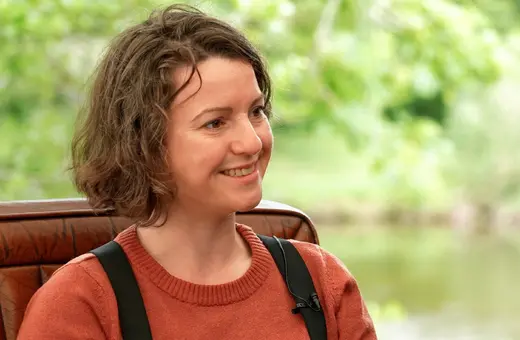Most addictive and harmful substances are either highly regulated and taxed, or straight out illegal. But something intentionally designed to be just as addictive as cigarettes and cocaine is used by teenagers and adults every day. Julie M. Albright argues why smart phone use is just as harmful as the drugs we ban.
I am a digital sociologist. I’ve spent my career tracking the growth and proliferation of digital devices and communications. At the beginning, I kind of poo-pooed talk of addiction, thinking: We stare at television screens, what’s the difference between that and a computer screen? With the invention of the iPhone though, where the Internet goes with you in your pocket (or hand) — my views on the addictive nature of digital technologies have changed. App developers have become savvy, learning how to manipulate your behavior and get you hooked. Our attention is being grabbed and held against our will, often without us even realize it.
While the severe health risks of smoking and cocaine use are well-documented, phone addiction — particularly among teens — is an emerging crisis with wide-ranging consequences that may prove to be even more detrimental — yet it’s often unseen. The constant connectivity facilitated by smartphones has ushered in a new era of compulsive behavior that mirrors the psychological patterns observed in substance addiction. Teens, whose brains are still developing, are especially vulnerable to this form of addiction. According to Pew Research, teenagers are now online "almost constantly," a trend that correlates with rising rates of depression, anxiety, and sleep disorders among this age group. Unlike the more overt physical damage caused by smoking and cocaine, the harms of phone addiction are insidious, infiltrating mental health, disrupting sleep, encouraging sedentary lifestyles, and eroding the quality of face-to-face human interactions. As this generation of digitally-immersed adolescents matures, we must grapple with the prospect that the societal toll of phone addiction could surpass the grim legacies of smoking and cocaine use.
___
According to Pew Research, teenagers are now online "almost constantly," a trend that correlates with rising rates of depression, anxiety, and sleep disorders among this age group.
___
Comparing past and current rates of smoking and cocaine use with the increasing prevalence of phone addiction paints a startling picture. According to the Centers for Disease Control and Prevention (CDC), cigarette smoking among U.S. adults has significantly declined from 20.9% in 2005 to 14.0% in 2019. Similarly, the National Institute on Drug Abuse reported a decline in cocaine use among young adults in the U.S., with the percentage of people aged 18-25 who had used cocaine in the past year dropping from 6.2% in 2007 to 5.1% in 2019. In stark contrast, screen time has been on a dramatic rise. A report from Common Sense Media revealed that, in 2019, American teens spent an average of more than seven hours per day on screen media for entertainment, not including time spent on schoolwork — a figure that was up nearly 45 minutes from 2015. For younger children, aged 8 to 12, the screen time average was nearly five hours per day, representing a substantial increase as well. As such, while public health initiatives have made progress in reducing the prevalence of smoking and cocaine use, screen time — a proxy for phone addiction — has been increasing alarmingly across different age groups.
SUGGESTED READING Addiction is not just a medical problem By Nina Christie
The Design of Addictiveness





















Join the conversation